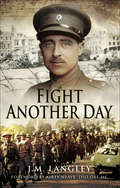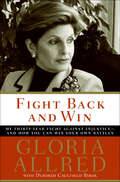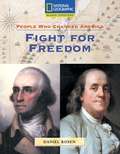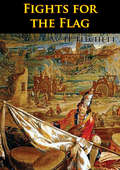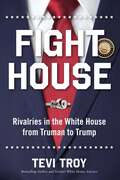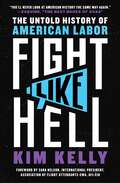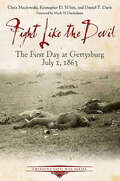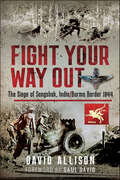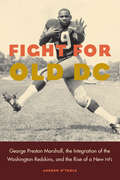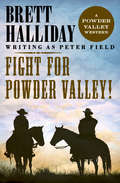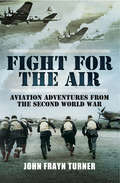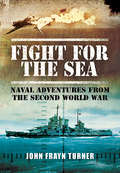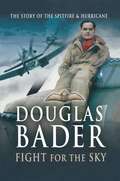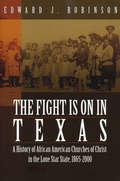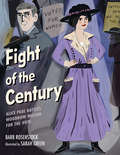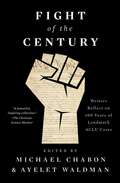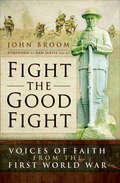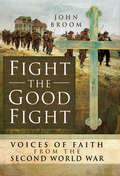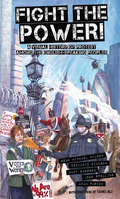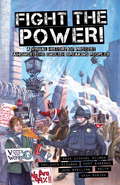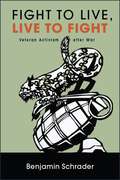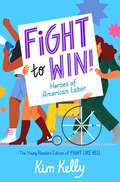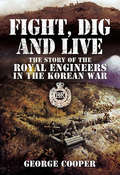- Table View
- List View
Fight Another Day
by J.M. LangleyAs a young subaltern in the Coldstream Guards, the author lost his arm at Dunkirk and was captured but eventually escaped via Lille, Paris, Marseilles, Spain and Gibraltar. He describes the fierce fighting outside Dunkirk, his captivity, escape and extraordinary life in Vichy France, before the Germans controlled it. His fellow escapees and the French who sheltered them make a rich cast of characters.On return to London, Langley is recruited into the Secret Service and told to organize the safe return of allied soldiers, sailors and airmen who had succeeded in either escaping from or evading the Germans. He describes the astonishing courage and sacrifice of the heroic underground operators who ran these escape lines across Belgium and France. Despite betrayal and infiltration from Germans, collaborators and traitors, over 3000 men were safely brought back to fight another day.Langley and Airey Neave, who joined him after his historic home run from Colditz, had to wrestle with rival secret organizations for resources to carry out their vital work.All this and more is brilliantly described in this gripping, beautifully written book.
Fight Back and Win: My Thirty-Year Fight Against Injustice—And How You Can Win Your Own Battles
by Gloria Allred Deborah Caulfield RybakVoted by her peers as one of the best lawyers in America, and described by Time magazine as "one of the nation's most effective advocates of family rights and feminist causes," Allred has devoted her career to fighting for civil rights and has won hundreds of millions of dollars for victims of abuse. She has taken on countless institutions to promote equality, including the Boy Scouts, the Friars Club, and the United States Senate. And as the attorney for numerous high-profile clients—including Nicole Brown Simpson's family, actress Hunter Tylo, and Amber Frey, Scott Peterson's girlfriend—Allred has helped victims assert and protect their rights. Throughout her memoir, Allred offers colorful—sometimes shocking—examples of self-empowerment from her personal and professional life. Presenting nearly fifty of her most memorable cases, Allred takes us deep inside the justice system to show how it's possible to win even in the face of staggering odds. Her inspiring true stories serve to remind us that winning justice depends on the righ-teousness of the cause and an individual's willingness to stand up, speak out, and fight back. Fight Back and Win is a powerful testament to Gloria Allred's trailblazing career and the battles she has fought alongside countless brave individuals to win justice for us all.
Fight For Freedom (Barbour Books, The American Adventure, Book #19)
by Norma Jean LutzMeg and Fred Allerton just can't get along. Fred is always teasing his older sister Meg and getting her into trouble for daydreaming and sketching. From her point of view, Meg wishes Fred wouldn't get into fights and say what he thinks so quickly. They argue on how to solve the problem of slavery, too. Fred is excited when William Lloyd Garrison opens a store in Cincinnati that won't sell anything produced by slave labor. Meg thinks there must be a way to deal with the issue that won't make people so angry. Then Meg gets terribly sick. Will Fred come to value the things that make his sister so different from him? And will Meg learn to stand up for herself and others?
Fight For Freedom (Reading Expeditions Social Studies)
by National Geographic Learning Staff Daniel RosenMeet the Founding Fathers and learn about the events, debates, and struggles of the colonists as they moved toward independence. Find out how George Washington and other leaders helped the Colonies unite and win their freedom.
Fight For The Flags [Illustrated Edition]
by W. H. FitchettIncludes 15 portraits and 14 mapsW. H. Fitchett brings to life some of the most notable clashes of arms between the British and the various enemies that they have fought against, from Minden to the Crimean War, from Blenheim to Salamanca."Fights for the Flag is as good as Deeds that Won the Empire. To say more than this in praise of the book before us is unnecessary, for Deeds that Won the Empire was one of the best collections of popular battle studies ever given to the public. Mr. Fitchett shows in Fights for the Flag all the good qualities which he showed in his first volume. There is the same admirable clearness of style, the same comprehensive sympathy, the same power to stir the blood and to paint noble deeds in fitting words. We note, too, the same excellent use of telling quotations. Whenever he can Mr. Fitchett gives what the Generals said in their own words, and not a mere rechauffé of their utterances. Thus Mr. Fitchett's work, though necessarily short and compressed, is never dull. Again, he shows here, as in his former book, the same power of describing localities and for bringing before one the place of battle. No writer ever had more completely the art of making one realise how opposing forces move both by land and sea."-The Spectator
Fight House: Rivalries in the White House from Truman to Trump
by Tevi Troy"Fight House looks juicy as all hell" - National Review In Fight House: Rivalries in the White House, from Truman to Trump, Washington Post best-selling presidential historian and former senior White House aide Tevi Troy will examine some of the juiciest, nastiest, and most consequential internecine administration struggles in modern American history. In doing so, he will not only provide context on the administrations, the players, and their in-fighting, but also show how those fights shaped the administrations in question, the presidents&’ historical reputations, and the policy landscape of modern America. In showing these fights, the book will highlight tough tactics used by sharp-elbowed operatives to prevail in bureaucratic disputes, from leaks to delays in submitting items for review to moving rivals out of cherished office spaces. Fight House will also look at the presidents&’ role in all of this, and question long-standing assumptions about whether creative tension is really the best method of governing. In watching recent White House battles play out in public, it appears that Kearns-Goodwin&’s &“Team of Rivals&” approach has its limits, and that perhaps presidents should seek to create a time that reduces tensions rather than exacerbating them. Troy will employ both his historical knowledge as well as his own high level White House experience to inform recommendations on the best ways to staff and organize a White House to ensure the best results for the president, and for the American people. Part riveting interpersonal history, part case study, and part analysis of the commanders in chief and their teams, Fight House will be essential reading for students of the presidency, and of the nation as a whole.
Fight Like Hell: The Untold History of American Labor
by Kim Kelly&“Kelly unearths the stories of the people-farm laborers, domestic workers, factory employees—behind some of the labor movement&’s biggest successes.&” —The New York Times A revelatory and inclusive history of the American labor movement, from independent journalist and Teen Vogue labor columnist Kim Kelly.Freed Black women organizing for protection in the Reconstruction-era South. Jewish immigrant garment workers braving deadly conditions for a sliver of independence. Asian American fieldworkers rejecting government-sanctioned indentured servitude across the Pacific. Incarcerated workers advocating for basic human rights and fair wages. The queer Black labor leader who helped orchestrate America&’s civil rights movement. These are only some of the working-class heroes who propelled American labor&’s relentless push for fairness and equal protection under the law. The names and faces of countless silenced, misrepresented, or forgotten leaders have been erased by time as a privileged few decide which stories get cut from the final copy: those of women, people of color, LGBTQIA people, disabled people, sex workers, prisoners, and the poor. In this assiduously researched work of journalism, Teen Vogue columnist and independent labor reporter Kim Kelly excavates that history and shows how the rights the American worker has today—the forty-hour workweek, workplace-safety standards, restrictions on child labor, protection from harassment and discrimination on the job—were earned with literal blood, sweat, and tears. Fight Like Hell comes at a time of economic reckoning in America. From Amazon&’s warehouses to Starbucks cafes, Appalachian coal mines to the sex workers of Portland&’s Stripper Strike, interest in organized labor is at a fever pitch not seen since the early 1960s. Inspirational, intersectional, and full of crucial lessons from the past, Fight Like Hell shows what is possible when the working class demands the dignity it has always deserved.
Fight Like the Devil: The First Day at Gettysburg, July 1, 1863 (Emerging Civil War Series)
by Chris Mackowski Daniel T. Davis Christopher D. White“Gives the reader an excellent readable narrative of the first day of battle . . . [and] an incredible driving tour which closes each chapter.” —Matthew Bartlett, Gettysburg ChronicleDo not bring on a general engagement, Confederate General Robert E. Lee warned his commanders. The Army of Northern Virginia, slicing its way through south-central Pennsylvania, was too spread out, too vulnerable, for a full-scale engagement with its old nemesis, the Army of the Potomac. Too much was riding on this latest Confederate invasion of the North. Too much was at stake.As Confederate forces groped their way through the mountain passes, a chance encounter with Federal cavalry on the outskirts of a small Pennsylvania crossroads town triggered a series of events that quickly escalated beyond Lee’s—or anyone’s—control. Waves of soldiers materialized on both sides in a constantly shifting jigsaw of combat. “You will have to fight like the devil . . .” one Union cavalryman predicted.The costliest battle in the history of the North American continent had begun.July 1, 1863 remains the most overlooked phase of the battle of Gettysburg, yet it set the stage for all the fateful events that followed.Bringing decades of familiarity to the discussion, historians Chris Mackowski, Kristopher D. White, and Daniel T. Davis, in their always-engaging style, recount the action of that first day of battle and explore the profound implications in Fight Like the Devil.“The book, written in the series’ accessible style, includes more than 100 illustrations, new maps and analysis.” —Longwood Magazine
Fight Your Way Out: The Siege of Sangshak, India/Burma Border, 1944
by David AllisonIn March 1944, Japan launched its audacious overland invasion of India from Burma. Taken by surprise, the British rear areas lay exposed and undefended except for the previously untested 50 Indian Parachute Brigade training in the jungle around Manipur. After a series of brutal encounter battles, the Paratroopers consolidated on the isolated Naga village of Sangshak high in the Manipur hills. Holding out against an aggressive and determined enemy, the Brigade fought off wave after wave of attacks in bloody hand-to-hand fighting. With shortages of ammunition and supplies and casualties mounting, the defenders held on for a critical week before fighting their way out through the mountainous terrain, back to British lines. Fight Your Way Out describes this little known but critical first major battle between Indian and Japanese armies on Indian soil. The siege is described in detail using first-hand accounts as is their daring escape through the jungle and the experiences of Indian and British survivors captured by the Japanese. The crucial battle of Sangshak cost the invaders precious time from which they never recovered and set the scene for their eventual defeat at the final battles of Kohima and Imphal.
Fight for Old DC: George Preston Marshall, the Integration of the Washington Redskins, and the Rise of a New NFL
by Andrew O'TooleIn 1932 laundry-store tycoon George Preston Marshall became part owner of the Boston Braves franchise in the National Football League. To separate his franchise from the baseball team, he renamed it the Redskins in 1933 and then in 1937 moved his team to Washington DC, where the team won two NFL championships over the next decade. But it was off the field that Marshall made his lasting impact. An innovator, he achieved many “firsts” in professional football. His team was the first to telecast all its games, have its own fight song and a halftime show, and assemble its own marching band and cheerleading squad. He viewed football as an entertainment business and accordingly made changes to increase scoring and improve the fan experience. But along with innovation, there was controversy. Marshall was a proud son of the South, and as the fifties came to a close, his team remained the only franchise in the three major league sports to not have a single black player. Marshall came under pressure from Congress and the NFL and its president, Pete Rozelle, as league expansion and new television contract possibilities forced the issue on the reluctant owner. Outside forces finally pushed Marshall to trade for Bobby Mitchell, the team’s first black player, in 1962. With the story of Marshall’s holdout as the backdrop, Fight for Old DC chronicles these pivotal years when the NFL began its ascent to the top of the nation’s sporting interest.
Fight for Powder Valley! (The Powder Valley Westerns #16)
by Brett HallidayFor the sake of cheated settlers, Sheriff Pat Stevens takes on a Powder Valley conman On a weather-beaten stretch of the Kansas prairie, a family fights to survive. Molly Hartsell is only twenty-seven, but years of barely scraping by have made her old before her time. Her children are frail, tired, and hungry. If something doesn't change soon, the Hartsells are doomed. But Molly's husband returns from the bank with good news: He sold the farm and invested every penny in property far away in Colorado's lush Powder Valley. It's a new start for the Hartsells, but it turns out their troubles are just beginning. When the Hartsells arrive in Powder Valley and discover they were sold a bill of false goods, it seems as if the family is ruined. But Sherriff Pat Stevens--with the help of his loyal friends Sam and Ezra--will fight tooth and nail to defeat the crooked swindlers and make sure everyone in town can call Powder Valley their home.
Fight for the Air: Aviation Adventures from the Second World War
by John Frayn TurnerThis collection of popular air warfare stories covers the entire span of World War II, beginning when the Royal Air Force faced fascist forces on its own until the dropping of the Atomic bombs on the Japanese in 1945. Fight for the Air offers a rich mixture of accounts about such large and well-known battles and operations as the Battle of Britain, the huge Allied bomber raids over German cities, as well as more specialist operations such as the Dambusters. Individual feats of courage make for inspiring reading. The author's prose crackles with action and tension and his deep understanding of air warfare is obvious.These short stories give the reader an understanding of the global scope of air operations and their massive contribution to ultimate victory.
Fight for the Sea: Naval Adventures from the Second World War
by John Frayn TurnerThis collection of popular naval stories covers the entire span of World War II, beginning when the British Royal Navy faced fascist forces on its own until the final Allied victory over the Japanese in 1945. Fight for the Sea offers a rich mixture of accounts about such large and well-known battles and operations as the Battle of the Coral Sea, as well as lesser-known actions such as the submarine attack on Corfu harbour, the loss of the USS Leedsdown, and the saga of the USS Rich to characterize the breadth and variety of the war at sea. Also included are memories of John F Kennedy's heroic actions with PT 109 and George H W Bush's near-death experience with an aircraft known as the 'flying casket'.A sailor's eye view of the war at sea, this compelling compilation has broad appeal. John Frayn Turner's prose crackles with action and tension to keep the reader's attention, and even those who know little about the war will find the stories to be a welcome introduction to the subject. Among the book's special attractions are the little-known contributions of rescue ships and merchant seamen and the adventures of civilians, including Johnnie Ferguson, who spent three weeks adrift in an open boat when her ship was torpedoed. Readers will come away with not only a clear understanding of the giant scope of World War II but of the individual grit and determination that produced victory.
Fight for the Sky: The Story of the Spitfire and Hurricane
by Douglas BaderThe only book written by the legendary &“legless&” ace, the double amputee World War II fighter pilot immortalized by the film Reach for the Sky. In Fight for the Sky, Douglas Bader tells the inspiring story of the Battle of Britain from the viewpoint of &“The Few.&” Using superb illustrations he traces the development of the Spitfire and Hurricane and describes the nail-biting actions of those who flew them against far superior numbers of enemy aircraft. As an added bonus, other well-known fighter aces including Johnnie Johnson, &“Laddie&” Lucas and Max Aikten contribute to Douglas&’s book, no doubt out of affection and respect. This a really important contribution to RAF history by one of the greatest—and certainly the most famous—pilot of the Second World War.
Fight is on in Texas, The: A History of African American Churches of Christ in the Lone Star State, 1865-2000
by Edward J. RobinsonThis groundbreaking work draws upon congregational histories and other primary sources to chronicle for the first time the story of African American Churches of Christ in Texas. Emerging out of the nineteenth-century Stone-Campbell Restoration Movement, the African American churches inherited from their white mentors both a biblicist theology and a feisty spirit. So evangelist John T. Ramsey could report in 1916 that 'there are but few loyal brethren out in this part of Texas; so you can see that the fight is on out West.'The "fight" waged by leaders in African American Churches of Christ was against religious error. Out of that "fight" emerged a growing network of congregations that have reached throughout Texas. This book lifts out of obscurity the African American Christians who joined Ramsey's 'fight...out West' and who made black churches of Christ in Texas what they are today.
Fight of the Century
by Barb RosenstockThe fight for women's suffrage between women's rights leader Alice Paul and President Woodrow Wilson is creatively presented as a four-round boxing match in this energetic nonfiction picture book.When Woodrow Wilson was elected President, he didn't know that he would be participating in one of the greatest fights of the century: the battle for women's right to vote. The formidable Alice Paul led the women's suffrage movement, and saw President Wilson's election as an opportunity to win the vote to women. She battered her opponent with endless strategic arguments and carefully coordinated protests, calling for a new amendment granting women the right to vote. With a spirit and determination that never quit--even when peaceful protests were met with violence and even when many women were thrown in jail--Paul eventually convinced President Wilson to support her cause, changing the country forever. Cleverly framed as a boxing match, this book provides a fascinating and compelling look at an important moment in American history. Sarah Green's bright, detailed illustrations perfectly accompany award-winning author Barb Rosenstock's captivating narrative.
Fight of the Century: Writers Reflect on 100 Years of Landmark ACLU Cases
by Neil Gaiman Dave Eggers Scott Turow Salman Rushdie Michael Cunningham Louise Erdrich Geraldine Brooks David Handler Andrew Sean Greer Ann Patchett Meg Wolitzer Elizabeth Strout Timothy Egan Jonathan Lethem Rabih Alameddine Lauren Groff Victor Lavalle Jennifer Egan Aleksandar Hemon Anthony Doerr William Finnegan Jesmyn Ward George Saunders Marlon James Viet Thanh Nguyen Yaa Gyasi Brit Bennett Morgan Parker Moriel Rothman-Zecher Sergio De La Pava Jacqueline woodson Steven Okazaki Li Yiyun Hector Tobar Moses Sumney C.J. Anders Brenda J. Childs Adrian Nicole LeBlancThe American Civil Liberties Union partners with award-winning authors Michael Chabon and Ayelet Waldman in this &“forceful, beautifully written&” (Associated Press) collection that brings together many of our greatest living writers, each contributing an original piece inspired by a historic ACLU case. On January 19, 1920, a small group of idealists and visionaries, including Helen Keller, Jane Addams, Roger Baldwin, and Crystal Eastman, founded the American Civil Liberties Union. A century after its creation, the ACLU remains the nation&’s premier defender of the rights and freedoms guaranteed by the Constitution. In collaboration with the ACLU, authors Michael Chabon and Ayelet Waldman have curated an anthology of essays &“full of struggle, emotion, fear, resilience, hope, and triumph&” (Los Angeles Review of Books) about landmark cases in the organization&’s one-hundred-year history. Fight of the Century takes you inside the trials and the stories that have shaped modern life. Some of the most prominent cases that the ACLU has been involved in—Brown v. Board of Education, Roe v. Wade, Miranda v. Arizona—need little introduction. Others you may never even have heard of, yet their outcomes quietly defined the world we live in now. Familiar or little-known, each case springs to vivid life in the hands of the acclaimed writers who dive into the history, narrate their personal experiences, and debate the questions at the heart of each issue. Hector Tobar introduces us to Ernesto Miranda, the felon whose wrongful conviction inspired the now-iconic Miranda rights—which the police would later read to the man suspected of killing him. Yaa Gyasi confronts the legacy of Brown v. Board of Education, in which the ACLU submitted a friend of- the-court brief questioning why a nation that has sent men to the moon still has public schools so unequal that they may as well be on different planets. True to the ACLU&’s spirit of principled dissent, Scott Turow offers a blistering critique of the ACLU&’s stance on campaign finance. These powerful stories, along with essays from Neil Gaiman, Meg Wolitzer, Salman Rushdie, Ann Patchett, Viet Thanh Nguyen, Louise Erdrich, George Saunders, and many more, remind us that the issues the ACLU has engaged over the past one hundred years remain as vital as ever today, and that we can never take our liberties for granted. Chabon and Waldman are donating their advance to the ACLU and the contributors are forgoing payment.
Fight the Good Fight: Voices of Faith from the First World War
by John Broom&“The inspiring stories of a number of very different characters who used their Christian faith to cope with their experiences of the First World War.&” —Jacqueline Wadsworth, author of Letters from the Trenches While a toxic mixture of nationalism and militarism tore Europe and the wider world apart from 1914 to 1919, there was one factor that united millions of people across all nations: that of a Christian faith. People interpreted this faith in many different ways. Soldiers marched off to war with ringing endorsements from bishops that they were fighting a Godly crusade, others preached in churches and tribunal hearings that war was fundamentally against the teachings of Christ. Whether Church of England or Nonconformist, Catholic or Presbyterian, German Lutheran or the American Church of Christ in Christian Union, men and women across the globe conceptualized their war through the prism of their belief in a Christian God. This book brings together twenty-three individual and family case studies, some of well-known personalities, others whose stories have been neglected through the decades. Although divided by nation, social class, political outlook, and denomination, they were united in their desire to &‘Fight the Good Fight.&’ &“John Broom looks at such beliefs during the first world war—the Tommies were always fighting for God, the king and their country . . . a fascinating study.&” —Books Monthly &“A detailed study of a usually hidden aspect of wartime social history, the topic of Christian faith. Fight the Good Fight has been meticulously researched and includes a wealth of previously unpublished material.&” —Come Step Back In Time
Fight the Good Fight: Voices of Faith from the Second World War
by John BroomThe Second World War challenged many of the concepts that had provided stability and unity in the world. As totalitarian regimes in Europe and Asia attempted to impose their world view on their neighbours, a struggle for what Winston Churchill described as `Christian civilisation took place on many fronts. On the home front, on land, on sea and in the air, as well as in the horrific concentration camps of Europe and prisoner of war camps in the Far East, people of a Christian faith found their beliefs challenged. However, for many this challenge provided an affirmation of that faith, as it provided a rock amidst the ever shifting sands of circumstance. This book contains the accounts of twenty such individuals, many drawn from previously unpublished sources. Their testimonies provide evidence that during a time of discord, disruption, dislocation and death, the Christian faith remained a key force in sustaining morale and a willingness to fight the good fight.Interesting Facts King George VI called National Days of Prayer during Britains darkest days in 1940Had Michael Benn survived the war, he would have become the 2nd Viscount Stansgate, meaning his brother, Tony, would not have had to fight to renounce his peerageBill Frankland avoided near certain death at the Alexandra Hospital Massacre by the toss of a coinStanley Warren only found out about the rediscovery of his Changi Murals during a chance work conversation in the 1950sAs a boy, Ken Tout was told by his parents to cross the street to avoid walking past the Catholic church. As a man he was invited to a private audience with Pope John Paul II.
Fight the Power!
by Sean Michael Wilson Polyp Benjamin Dickson Hunt Emerson Adam PasionThis book visualises key moments in history where ordinary people have risen up and fought governments, corporations, even empires. When the 99% have stood up to combat exploitation and abuse or in pursuit of freedom of action and a better life. In other words, to show times in history, when people have struggled forward to FIGHT THE POWER!
Fight the Power!
by Sean Michael Wilson Benjamin Dickson Hunt Emerson Adam Pasion John SpellingNamed one of Rough Trade's Best Books of 2013According to Gandhi, the Four Stages of Protest are as follows: First they ignore you. Then they ridicule you. Then they fight you. Then you win!In Fight the Power!, comics authors Sean Michael Wilson and Benjamin Dickson team up with illustrators Hunt Emerson, John Spelling, and Adam Pasion to show how this process has been played out again and again throughout history--and has slowly but surely led to hard-won rights for the people along the way. Focusing on the English-speaking nations, Wilson and Dickson chronicle the struggles of the Luddites and Swing Riots in the early 1800s, through the Irish Rebellions that lasted through 1922; from the suffragettes in 1918 to Rosa Parks and the bus boycott of the mid-1950s; from the trial of Nelson Mandela to the Occupy movement that has only just begun. By illuminating the variety of protests--and the valuable connections among them--through an accessible art form, Fight the Power! shows that there is a point to the struggle, fight by fight, win by win.From the Trade Paperback edition.
Fight to Live, Live to Fight: Veteran Activism after War (SUNY series in New Political Science)
by Benjamin SchraderWhile veterans are often cast as a "problem" for society, Fight to Live, Live to Fight challenges this view by focusing on the progressive, positive, and productive activism that veterans engage in. Benjamin Schrader weaves his own experiences as a former member of the American military and then as a member of the activist community with the stories of other veteran activists he has encountered across the United States. An accessible blend of political theory, international relations, and American politics, this book critically examines US foreign and domestic policy through the narratives of post-9/11 military veterans who have turned to activism after having exited the military. Veterans are involved in a wide array of activism, including but not limited to antiwar, economic justice, sexual violence prevention, immigration issues, and veteran healing through art. This is an accessible, captivating, and engaging work that may be read and appreciated not just by scholars, but also students and the wider public.
Fight to Win!: Heroes of American Labor (The Young Readers Edition of Fight Like Hell)
by Kim KellyThe revelatory history of the American labor movement, from independent journalist and Teen Vogue labor columnist Kim Kelly, now adapted for young readers.The history of American labor is full of incredible leaders, organizers, and workers, but not all of them have gotten the recognition they deserve. People like… Rosina Tucker, a Black woman who helped railroad workers organize the first Black-led labor union in America, Maria Moreno, an Indigenous and Mexican woman who fought for farmworkers in the fields of California, Ah Quon McElrath, a Chinese Hawaiian woman who united the laborers of the vast sugarcane plantations, Ben Fletcher, a Black dockworker who organized a strong, interracial union that ran the ports of Philadelphia, Judy Heumann, a disabled Jewish schoolteacher who became the mother of the Disability Rights Movement…and many more. With blood, sweat, and tears, they fought to win the rights we hold so dear today. Their voices reveal the true history of American labor.
Fight to the Finish
by Tim CookThe magisterial second volume of Tim Cook's definitive account of Canadians fighting in the Second World War. Historian Tim Cook displays his trademark storytelling ability in the second volume of his masterful account of Canadians in World War II. Cook combines an extraordinary grasp of military strategy with a deep empathy for the soldiers on the ground, at sea and in the air. Whether it's a minute-by-minute account of a gruelling artillery battle, vicious infighting among generals, the scene inside a medical unit, or the small details of a soldier's daily life, Cook creates a compelling narrative. He recounts in mesmerizing detail how the Canadian forces figured in the Allied bombing of Germany, the D-Day landing at Juno beach, the taking of Caen, and the drive south. Featuring dozens of black-and-white photographs and moving excerpts from letters and diaries of servicemen, Fight to the Finish is a memorable account of Canadians who fought abroad and of the home front that was changed forever.
Fight, Dig and Live: The Story of the Royal Engineers in the Korean War
by George CooperThe Korean War, which began with an unprovoked attack by North Korea in 1950, went on for three long years. Over 100,000 soldiers of the United Nations forces, including those of the Republic of Korea, were killed and three times that number wounded. United Kingdom casualties amounted to some 300 Officers and 4,000 Other Ranks. The Royal Engineers deployed a Field Squadron to Korea in the Autumn of 1950 and this was expanded to a Regiment the following year. Involved in fierce fighting, the Sappers suffered grievous casualties including 42 killed and several hundred wounded. Their gallantry was rewarded by numerous gallantry awards, including two DSOs, thirteen MCs, (one by the author), eight MMs and the most distinguished of all, a Distinguished Conduct Medal, second only to the Victoria Cross.It was a vicious war whose intensity never slackened and in the last two months alone the Communist artillery fired over 700,000 rounds against 4.7 million fired back by the United Nations. The Royal Engineers were involved at all levels, from patrols and minefields, to defense works and, providing support to all manner of operations such as transportation, bridging and the important provision of postal services, so vital for morale. Inevitably, though, the focus in that of a war like Korea is often on sapper participation in the forward area where they were often involved in close-quarter fighting with the enemy. Sappers certainly lived up to the title of this book: Fight, Dig and Live.
